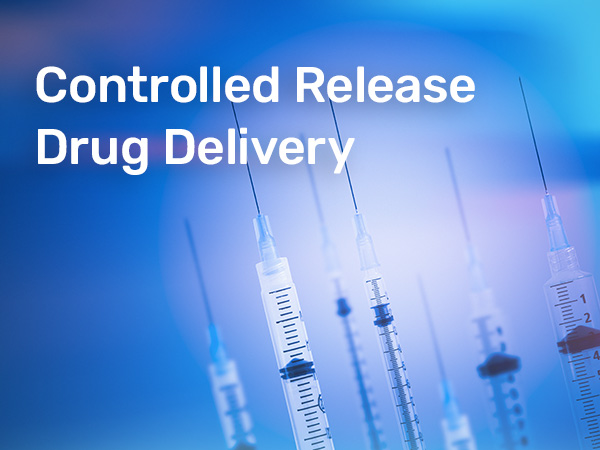Patient-centric drug development is a concept that has proven to be divisive: Some see it as nothing but a buzzword, while others have embraced the concept completely. Either way, it has garnered much attention over the last decade. This new approach to treatment takes into account the patient's perspective when it comes to drug development.

Image Credit: Powder Systems
One of the main benefits is the close focus on convenience and safe drug administration. Conventional drug development approaches prioritize efficacy and fail to reflect on individual patient suitability. For instance, lifestyle can play a major role in patient compliance. However, one way to improve patient compliance could be a more personalized approach that reduces patient dosing burdens. Controlled-release drug delivery is one of the leading solutions in this area.
The clue is in the name, as controlled-release drugs administer the active compounds at a prolonged, predetermined rate. This rate is both rational and predictable, ensuring optimal serum-drug concentration. To optimize this approach, the delivery vehicle is crucial. There are several candidates, yet biodegradable microspheres are front and center for safe, controlled, effective drug delivery.
Delving deeper into biodegradable microspheres
As far as targeted drug delivery is concerned, biodegradable microspheres are of utmost importance to this system. By design, they have been developed to break down gradually as drug exposure is subsequently teased out. This results in a tandem effect of optimized therapeutic efficacy while mitigating toxicity risks and other adverse reactions.
To put it simply, once the drug has been administered, microspheres begin degrading over time. The drug, encapsulated in a microsphere, permeates outwards and penetrates adjacent tissues. The type of polymer determines the deterioration rate which in turn determines the drug’s release rate. Therefore, drug developers can adapt supply for specific timeframes.
Below are some of the main features of biodegradable microspheres:
Polymer constituents
The choice of polymer plays a crucial role in how well the biodegradable microspheres function. They can be synthesized from a range of natural or synthetic polymers. Some of the main polymers used include poly-lactic acid (PLA), poly-glycolic acid (PGA), and their copolymer, poly-lactic-co-glycolic acid (PLGA).
Fabrication techniques
Microsphere preparation is a complex procedure, and the method used can significantly impact drug release profiles. Researchers have several different techniques at their disposal, with emulsion, solvent evaporation, and avant-garde co-axial electrohydrodynamic atomization (CEHDA) being the most common.
Versatility in drug delivery
Biodegradable microsphere adaptability is truly admirable as it is possible to tailor them to encapsulate and deliver an extensive range of drugs for specific use cases. This includes but is not limited to groundbreaking anti-Parkinson drugs, potent anti-tumor agents, and historical Diabetes control drugs.
The superiority of biodegradable microspheres in controlled-release drug delivery
1. Mastery over release
Biodegradable microspheres are first-class performers when it comes to modulating drug release. Researchers can create a carefully calibrated drug release trajectory by refining the microsphere’s size, composition, and drug-loading methodology. This kind of precision boosts drug potency while mitigating against any adverse reactions.
2. Inherent biodegradability
After the drugs have been administered, biodegradable microspheres decompose in synchronization with the body’s natural metabolic pathways. This removes the need for surgical extraction, reducing potential complications and enhancing patient comfort.
3. Precision targeting
Biodegradable microspheres are extremely compatible with surface modifications. Such revisions allow the microspheres to selectively cling to targeted cells or tissues, enabling precision drug delivery and eliminating systemic repercussions.
4. Versatility par excellence
Biodegradable microspheres are not restricted to delivering only a particular class of drug. They are adaptive enough to encompass proteins, peptides, and nucleic acids, making them a dynamic tool for various medical interventions, from oncology to gene therapy.
Interested in learning more?
Biodegradable microspheres are well placed when revolutionizing the drug delivery industry due to their controlled-release capabilities, biodegradability, precision targeting, and unparalleled versatility. Their potential to adapt to different medical scenarios highlights their importance in contemporary pharmaceutical research and development.
Powder Systems Ltd (PSL) remains committed to taking great, innovative strides in this domain, with microsphere formulation as the company's main focus. PSL aims to help drug manufacturers complete a broad range of aseptic processes with their microspheres, whether in early-phase drug research or scale-up operations.
PSL’s unique MSR™ technology is proven at all levels of microsphere production and readily optimizes product recovery, batch repeatability, and production flexibility.
About Powder Systems
Powder Systems Limited (PSL) provides a full range of solid liquid separation solutions for filtration, drying, and processing from research and development activities up to larger commercial production scale. Quality and innovation are central to everything they do. They are proud of their award-winning track record and have been working with industry partners for over 35 years. PSL supports clients by developing solutions to overcome challenging manufacturing processes and provide first-class aftercare services.
Sponsored Content Policy: News-Medical.net publishes articles and related content that may be derived from sources where we have existing commercial relationships, provided such content adds value to the core editorial ethos of News-Medical.Net which is to educate and inform site visitors interested in medical research, science, medical devices and treatments.